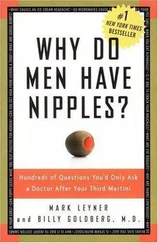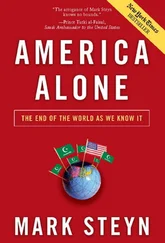That’s it. No wiggle room. A monkey on the moon wouldn’t count, nor an unmanned drone, nor a dune buggy that can’t take off again but transmits grainy footage back to Houston as it rusts up in the crater it came to rest in.
The only way to win the bet is with a real-live actual American standing on the surface of the moon planting the Stars and Stripes. Even as it happened, the White House was so cautious that William Safire wrote President Nixon a speech to be delivered in the event of disaster: Fate has ordained that the men who went to the moon to explore in peace will stay on the moon to rest in peace… 5
Yet America did it. “Fly Me to the Moon/Let me sing forever more.” What comes after American yearning and achievement? Democratization: “Everybody Gets to Go the Moon.” That all but forgotten Jimmy Webb song from 1969 catches the spirit of the age:
Isn’t it a miracle
That we’re the generation
That will touch that shiny bauble with our own two hands?
Whatever happened to that?
Four decades later, Bruce Charlton, professor of Theoretical Medicine at the University of Buckingham in England, wrote that “that landing of men on the moon and bringing them back alive was the supreme achievement of human capability, the most difficult problem ever solved by humans.” 6That’s a good way to look at it: the political class presented the boffins with a highly difficult and specific problem, and they solved it—in eight years. Charlton continued:
Forty years ago, we could do it—repeatedly—but since then we have not been to the moon, and I suggest the real reason we have not been to the moon since 1972 is that we cannot any longer do it. Humans have lost the capability.
Of course, the standard line is that humans stopped going to the moon only because we no longer wanted to go to the moon, or could not afford to, or something…. But I am suggesting that all this is BS…. I suspect that human capability reached its peak or plateau around 1965–75—at the time of the Apollo moon landings—and has been declining ever since.
Can that be true? Charlton is a controversialist gadfly in British academe, but, comparing 1950 to the early twenty-first century, our time traveler from 1890 might well agree with him. And, if you think about it, isn’t it kind of hard even to imagine America pulling off a moon mission now?
The countdown, the takeoff, a camera transmitting real-time footage of a young American standing in a dusty crater beyond our planet blasting out from his iPod Lady Gaga and the Black-Eyed Peas or whatever the twenty-first-century version of Sinatra and the Basie band is…. It half-lingers in collective consciousness as a memory of faded grandeur, the way a ninetheenth-century date farmer in Nasiriyah might be dimly aware that the Great Ziggurat of Ur used to be around here someplace.
So what happened? According to Professor Charlton, in the 1970s “the human spirit began to be overwhelmed by bureaucracy.” The old can-do spirit? Oh, you can try to do it, but they’ll toss every obstacle in your path.
Go on, give it a go: invent a new medical device; start a company; go to the airport to fly to D.C. and file a patent. Everything’s longer, slower, more soul-crushing. And the decline in “human capability” will only worsen in the years ahead, thanks not just to excess bureaucracy but insufficient cash.
“Yes, we can!” droned the dopey Obamatrons of 2008. No, we can’t, says Charlton, not if you mean “land on the moon, swiftly win wars against weak opposition and then control the defeated nation, secure national borders, discover breakthrough medical treatments, prevent crime, design and build to a tight deadline, educate people so they are ready to work before the age of 22….”
Houston, we have a much bigger problem.
To be sure, there’s still something called “NASA” and it still stands for the “National Aeronautics and Space Administration.” But there’s not a lot of either aeronautics or space in the in-box of the agency’s head honcho. A few days after Charlton penned his elegy for human capability, NASA Administrator Charles Bolden appeared on al-Jazeera and explained the brief he’d been given by President Obama:
One was he wanted me to help re-inspire children to want to get into science and math; he wanted me to expand our international relationships; and third and perhaps foremost, he wanted me to find a way to reach out to the Muslim world and engage much more with dominantly Muslim nations to help them feel good about their historic contribution to science and math and engineering. 7
Islam: The final frontier! To boldly go where no diversity outreach consultant has gone before! What’s “foremost” for NASA is to make Muslims “feel good” about their contributions to science. Why, as recently as the early ninth century Muhammad al-Khwarizmi invented the first universal horary quadrant! Things have been a little quiet since then, or at least since Taqi-al-Din’s observatory in Istanbul was razed to the ground by the Sultan’s janissaries in 1580. If you hear a Muslim declaring “We have lift off!” it’s likely to be a triumphant ad-lib after lighting up his crotch. As far as I recall, the most recent Islamic contribution to the subject of space exploration came from Britain’s most prominent imam, Abu Hamza, who in 2003 declared that the fate of the space shuttle Columbia was God’s punishment “because it carried Americans, an Israeli and a Hindu, a trinity of evil against Islam.” 8
It’s easy to laugh at the likes of Abu Hamza, although not as easy as it should be, not in Europe and Canada, where the state is eager to haul you into court for “Islamophobia.” But the laugh’s on us. NASA is the government agency whose acronym was known around the planet, to every child who looked up at the stars and wondered what technological marvels the space age would have produced by the time he was out of short pants. Now the starry-eyed moppets are graying boomers, and the agency that symbolized man’s reach for the skies has transformed itself into a self-esteem boosterism operation. Is there an accompanying book— Muslims Are from Mars, Infidels Are from Venus ?
There’s your American decline right there: from out-of-this-world to out-of-our-minds, an increasingly unmanned flight from real, historic, technological accomplishment to unreal, ahistorical, therapeutic, touchy-feely multiculti.
So we can’t go to the moon. And, by the time you factor in getting to the airport to do the shoeless shuffle and the enhanced patdown, flying to London takes longer than it did in 1960. If they were trying to build the transcontinental railroad now, they’d be spending the first three decades on the environmental-impact study and hammering in the Golden Spike to celebrate the point at which the Feasibility Commission’s expansion up from the fifth floor met the Zoning Board’s expansion down from the twelfth floor.
Google and Apple and other latter day American success stories started in somebody’s garage—the one place where innovation isn’t immediately buried by bureaucracy, or at least in most states, not until some minor municipal functionary discovers you neglected to apply for a Not Sitting Around on My Ass All Day permit. What did Apple and company do in those garages? They invented and refined home computers—an entirely logical response to late twentieth-century America: when reality seizes up, freedom retreats and retrenches to virtual reality, to the internal. Where once space was the final frontier, now we frolic in the canyons of our mind.
We’re in the Wilbur & Orville era of the Internet right now, but at the Federal Communications Commission and other agencies they’re already designing the TSA uniforms for the enhanced cyberpatdown.
Читать дальше











